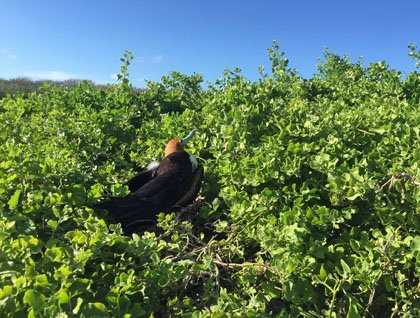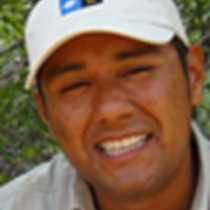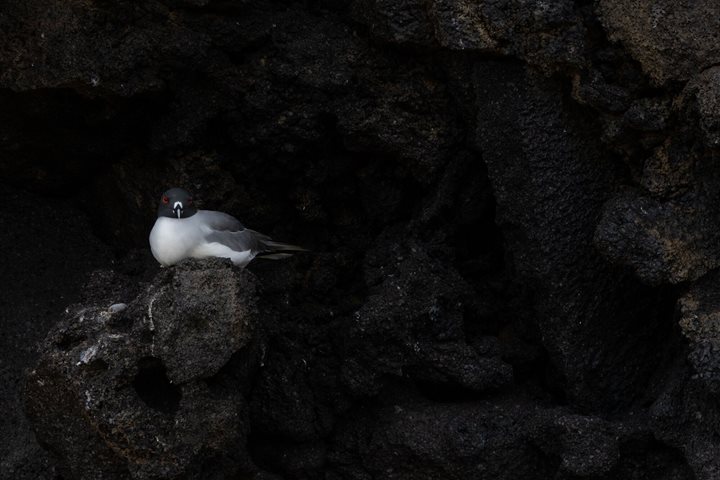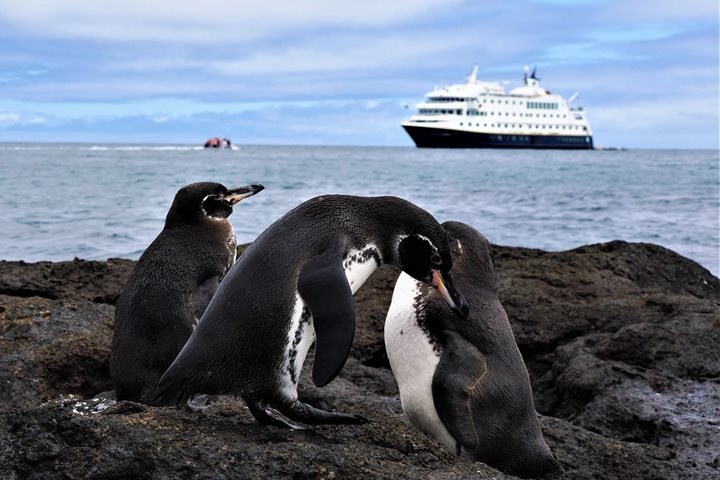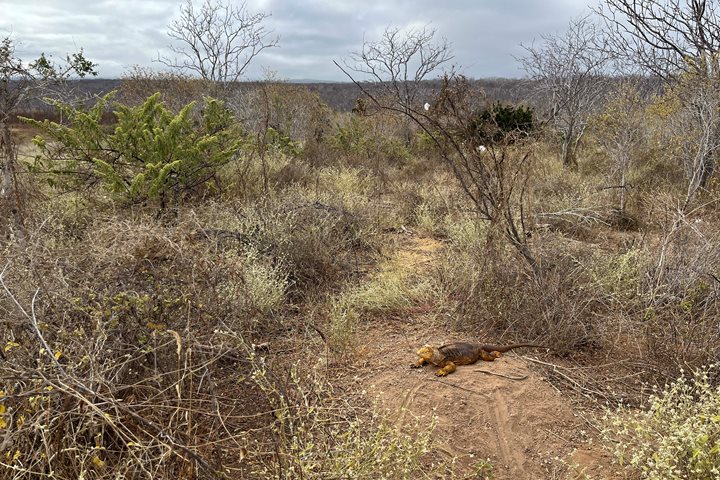Genovesa is located above the equator line, and this is the only island that is open to visitors in the northern side of Galapagos. It is a volcanic island, like all of the islands in this group, but it is also the only one whose anchorage is inside the caldera due to a collapse on its side allowing the ocean to go in.
The attractions here are apparent as soon as you arrive—thousands of birds can be found everywhere on the island. The first activities in the morning started at 8 am and included two hikes at two different locations. We divided the groups in order to lessen our impact, in an effort to keep the island and its wildlife pristine. The first group of people headed to a site known as Prince Phillips Steps for a very interesting hike with highlights including nesting seabirds, among them are the beautiful red-footed boobies, Nazca boobies and frigatebirds that are found here throughout the year. During this season, many of them are incubating eggs or raising chicks.
It is incredible to witness the tameness of these animals, as groups of people walk by and they do nothing but keep busy with their own business. As we progressed along the trail, we also encountered several varieties of land birds that have also taken up residence here over the years, including Galapagos mockingbirds, finches, doves and herons. One land bird that is only rarely sighted is the short-eared owl, and today some of us had the opportunity to spot one, hunting for storm petrels.
The other groups hiked along a small coralline sand beach, where a slightly different array of wildlife can be seen. Red-footed boobies nesting in mangroves along the coast line, others on low bushes, frigatebirds in their breeding season, inflating their huge red pouches to attract the females that fly around in search of potential mates. Sea gulls were everywhere—this variety is so beautiful, and they differ from others in that they hunt at night, preying mostly on squid and flying fish.
When the morning hikes were finished, we returned to the National Geographic Endeavour to change clothes for our next activity. Soon we were loading our Zodiacs for deep water snorkeling. These waters are so rich in animal life, due to a mix of nutrient rich waters coming from south and warm water from north, making this was an amazing place to enjoy the very warm waters of the tropical ocean current from Panama and its unique wildlife.
It’s been another fantastic day in the Galapagos, and more discoveries await us as our expedition continues!

